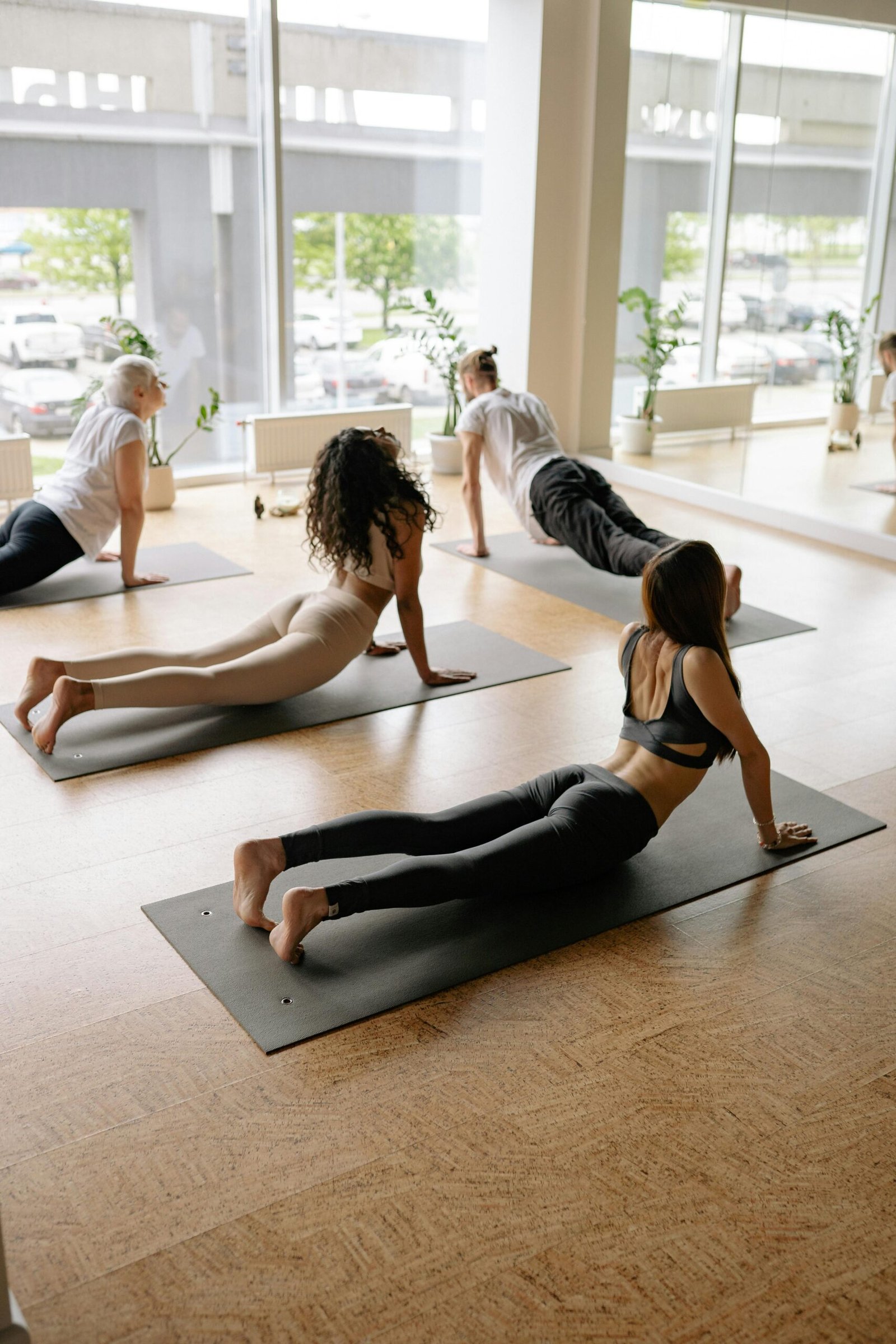The first step toward improving your mental health and general well-being could be looking for the top meditation classes close by. Meditation provides a haven of peace in the fast-paced world of today where stress and anxiety have unwelcome allies. From knowledge of many meditation techniques to assessing teachers and facilities, this thorough guide will bring you through everything you need to know about finding perfect meditation courses in your area.

Introduction
From an old spiritual practice, meditation has developed into a popular wellness activity accepted by millions of people all around. Regular meditation can lower stress, increase focus, improve emotional control, and even improve physical health—what practitioners have known for millennia—according to the mounting corpus of scientific studies. Starting a meditation practice might feel daunting for many novices, though, without appropriate direction.
Finding the best meditation lessons close by is really vital since the correct teacher and surroundings could make all the difference between a transforming experience and one that leaves you disappointed. This guide will help you negotiate the process of locating courses that fit your objectives and tastes whether your needs are for spiritual dimensions of meditation, relief from anxiety, or enhancement of attention.
The varied terrain of meditation techniques will be discussed in the parts that follow, together with techniques for finding quality courses in your region and criteria for assessing teachers and facilities. We will also cover pragmatic issues such budget, time, and preparation so you have all the skills you need to boldly start your path of meditation.
Know Various Meditation Techniques
Understanding the many meditation techniques accessible can help you start looking for classes close by. Every method has special advantages and strategies; so, choosing one that fits your aims and personality can greatly improve your experience.
Mindfulness meditation
Accessible and well-documented, mindfulness meditation has become somewhat popular in Western societies. Often by emphasizing the breath, physical sensations, or environmental stimuli, this method teaches one to pay attention to the current moment without judgment.
Most mindfulness courses build on Jon Kabat-Zinn’s Mindfulness-Based Stress Reduction (MBSR) approach or related ideas. Usually combining formal meditation techniques with conscious movement and lessons on including mindfulness into daily living, these workshops
TM, transcendental meditation
During transcending meditation, a personal mantra—a particular sound or phrase—is silently repeated during meditation sessions. Twice daily, TM practitioners mediate for twenty minutes while comfortably seated with eyes closed.
Unlike mindfulness, which stresses awareness, TM seeks to totally transcend cognition and attain a state of “restful alertness.” Official TM sessions have a set teaching approach and call for training from qualified teachers.
Zen Meditation, or Zazen
Originating in Japanese Buddhist traditions, Zen meditation usually consists on sitting in particular postures while focusing on the breath and observing ideas free from attachment. Zen centers sometimes combine aspects of traditional Buddhist practice, like chanting and koans (paradoxical statements or questions) contemplation.
Classes in Zen meditation often stress rigorous practice, good posture, and the way contemplative awareness should be included into all activities.
Loving-Kindness (Metta) Meditation
Metta meditation seeks to cultivate compassion, kindness, and goodwill toward other people. Usually starting with nice intentions for oneself, practitioners then progressively extend these wishes to loved ones, neutral people, problematic people, and finally all things.
Classes teaching loving-kindness meditation sometimes include guided visualizations and the repeated words “May I be happy, may I be well, may I be safe, may I live with ease.”
Yoga Meditations
Many yoga classes include meditation as part of their offerings; usually, they combine meditation with breathing exercises (pranayama) and physical postures (asanas). For novices who find sitting meditation difficult, these combined techniques can be especially easily accessible.
Depending on the school, yoga meditation programs differ greatly; choices range from vigorous Kundalini techniques to more introspective Yin approaches.

7 Effective Techniques to Locally Find Meditation Classes
Locating the best meditation classes nearby calls for some investigation and thought. These seven useful techniques will enable you to find solutions fit for your requirements and tastes.
1. Use apps and online directories.
Finding meditation courses close by is simpler than it has ever been thanks to the digital age. Discover local possibilities using specialized apps and websites including Mindful.org, Meditation Finder, even Yelp or Google Maps.
The Insight Timer app, for example, offers centers and a teacher’s directory in addition to guided meditations. In a same vein, MeetUp and other sites frequently feature community meditation groups and seminars. Look for listings with thorough descriptions, reviews, and unambiguous information on teaching approach while using these tools.
2. View Local Studios and Wellness Centers
Along with other offerings, wellness centers, yoga studios, and holistic health institutions may provide meditation sessions. Usually these places offer a quiet, focused space fit for practice.
Wellness centers have the benefit of their multidisciplinary approach; you could find many meditation forms under one roof and be able to try several ways. These centers also frequently hold seminars and special events meant to expand your knowledge of meditation.
3. Discover Spiritual and Religious Centres
Many meditation techniques have roots in spiritual practices, hence local religious centers can be quite good sources of real teaching. Public meditation sessions are offered by Buddhist temples, Hindu centers, Zen centers, even certain churches and synagogues.
These settings usually offer not just technical guidance but also background on the ethical and philosophical aspects of meditation. Many accept guests from all origins, regardless of religious inclination.
4. Research Medical and Academic environments
Increasingly acknowledging the advantages of meditation, universities, colleges, and medical facilities provide courses to students, patients, and members of the community. Meditation is often included into offerings of hospital wellness programs, university recreation facilities, and community education departments.
Those seeking secular practice alternatives may find these venues appealing as they approach meditation from a scientific, evidence-based standpoint. Programs in these settings often borrow from clinical techniques as Mindfulness-Based Stress Reduction (MBSR) or Mindfulness-Based Cognitive Therapy (MBCT).
5. See Libraries and Community Centers
Public facilities such libraries, leisure departments, and community centers are starting to feature meditation sessions more and more in their offerings. Usually providing reasonably priced solutions, these locations could be very easily accessible for newcomers.
Community-based classes give chances to interact with like-minded people in your area and often have a friendly, inclusive environment. For listings, look at the event calendar or community center bulletin board at your local library.
6. Use word-of-mouth and social media.
Often the best discoveries come from personal recommendations. Find out from friends, coworkers, doctors, or yoga teachers about meditation sessions they have loved. Local Facebook groups, NextDoor, or Instagram can also be great tools for finding events that might not show up in official directories.
When you ask for suggestions, be clear about what you want. Talk about your preferred methodologies, religious or secular settings, any physical restrictions or particular aims you have in mind.
7. Go to workshops and meditation retreats.
Although not frequent classes, retreats and seminars can be great starting point for many times leading to continuous links to classes. Many retreat places provide “introduction to meditation” weekends or day-long immersions that give complete orientation to techniques.
Usually leaving with tools for ongoing practice, participants provide suggestions for local teachers and courses. These gatherings also let you try several teaching ways and strategies, so enabling you to hone your tastes.

How to Review Meditation Teachers
After you have located possible meditation sessions close by, you now have to assess the quality of instruction. Unlike certain disciplines, meditation instruction lacks universal certification criteria, hence it is crucial to evaluate teachers closely.
Training and Certificates
Though this occurs in many ways, reputable meditation teachers usually have formal education. Search for educators with:
Finished courses of instruction in certain meditation traditions (e.g., certified MBSR instructors, approved Zen teachers).
- Significant personal practice experience, ideally with reference to retreat experiences
Relevant study in disciplines such religious studies, counseling, or psychology.
Constant mentoring from experienced teachers
Although outstanding credentials show dedication and depth of knowledge, they do not ensure successful teaching. Usually, good teachers are open about their training history.
Instruction Style and Communication
Good meditators strike a mix between rigidity and flexibility. See whether the teacher in your first class:
Clearly describes methods using easily understandable language.
- Answers carefully to inquiries.
Generates a nonjudging, encouraging environment.
Honors the variety of experiences kids could encounter.
provides variations for several degrees of ability.
The finest teachers realize that everyone has different experiences with meditation and avoid dogmatic methods. They offer methods as invitations rather than exact instructions.
Ethical Behavior and Limitaries
In meditation environments, good teacher-student connections are absolutely vital. Watch out for teachers who:
Claim grandiosely about the advantages of meditation.
Present yourselves as spiritual authority or gurus.
Create dependencies instead of so enabling student liberty.
Blur professional lines or personal relationships
Press students into further purchases or obligations.
Ethical teachers keep suitable professional limits and acknowledge the sensitivity that can develop in meditation environments.
Financial Considerations for Meditation Programs
From free community offerings to elite studio memberships, meditation sessions range greatly in cost. Knowing the price environment will enable you to identify choices that satisfy your needs and budget.
Common Pricing Systems
Usually, there are numerous ways to classify meditation class pricing:
Usually running $10 to 25 per class, drop-in sessions
Class packages: Usually discounted rates for several sessions bought together
Usually from $50 and 150, monthly memberships usually include unlimited classes.
Structured events ranging from $100 to $500: seminars and series
Common in spiritual institutions, the donation-based (dana) pay-what-you-can model
More specialized or intensive programs, such as eight-week MBSR courses, usually run $300–500 and feature lots of materials and training.
Identifying Reasonable Alternatives
If money is tight, there are various ways to find reasonably priced quality meditation instruction:
Libraries and community centers sometimes provide free or inexpensive seminars.
Many spiritual venues offer choices based on donations.
Sometimes programs at universities and hospitals have sliding-scale rates.
Certain companies have work-exchange policies.
Group prices or referral savings could be offered.
Many educators grant scholarships or lowered charges for people in need.
Remember that better quality does not always follow from more cost. Simple environments at low cost create some of the most real and successful meditation sessions.
Value Past Price
When assessing the price of meditation seminars, take whole worth into account:
- Instructor’s experience and skill
Class count and degree of personal attention - Standard of the physical surroundings
Additional materials offered
Community ties and encouragement
Better value may come from a somewhat more costly lesson with an outstanding teacher in a suitable setting than from a less expensive choice that leaves you disappointed or perplexed.
Advantage of Frequent Meditation
Knowing the possible advantages of meditation will inspire you to choose the correct class and support your practice through first difficulties.
Physical Health Benefits
Regular meditation has been linked in research to many physiological changes:
Lowered blood pressure
enhanced immune system
Improved sleep quality
Lower inflammation indicators
Improvement in pain control
lowered cortisol levels
Usually developing gradually with constant practice, these advantages are most noticeable when one regularly attends guided classes.
Mental and Emotional Well-Being
Maybe the most well researched advantages of meditation have to do with psychological health:
lowered depression and anxiety symptoms
improved control of emotions
better control of stress
more insight and self-awareness
Enhanced concentration span and focus
- Creativity and cognitive flexibility
Many practitioners say that engaging with a qualified teacher speeds up these effects by offering focused direction and guiding around obstacles.
Social and Relational Gain
Regular meditation—especially in social environments—may improve your relationships:
Greater compassion and empathy
Enhanced abilities in communicating
More patience in demanding exchanges
Improved feeling of connection and fit in
Lower reaction during disputes
Classes using relational meditation techniques or discussion components especially help in these areas.
Establishing a Home Practice to Support Classes
While nearby meditation programs offer necessary direction, creating a home practice extends the advantages between meetings.
Arranging Your Meditative Environment
Though little, a dedicated practice area helps to support consistency:
Choose a rather calm spot free of many distractions.
Think about choices for comfortable seating (bench, cushion, chair).
Keep any useful tools close—a timer, a blanket, a diary.
Add significant components to help attention (candle, plant, picture).
Make sure the area is easily reachable instead of needing careful setup.
Consistent usage of even a corner of a room can come to be connected with the quiet and concentration of meditation.
Organizing Residential Sessions
Home practice gains from well defined criteria:
Establish reasonable times, beginning with five to ten minutes if new
Create a consistent schedule—same time daily if at all possible.
start with methods acquired in class instead of experimenting.
Think about using guided audio sent from your teacher.
Keep a basic notebook noting observations and queries.
Many teachers set certain homework tasks between classes to foster integration.
Keeping Up Motivation Between Classes
Solo practice poses motivating difficulties for which many techniques can help:
Track calendars or use meditation apps as visual reminders.
Work with a pal for accountability checks in.
Clearly state the purposes for your practice.
See and value small advantages as they surface.
Bring challenges and questions to your next class.
Consistency is more important than length; a little daily practice has more advantages than sporadic lengthier sessions.
FAQs
Classes in meditation range greatly in cost. Usually suggesting $5–20 a session, community centers and spiritual organizations sometimes provide donation-based workshops whereby you pay what you can afford. For drop-in sessions, studio classes usually run from $15 to 25; bundles and subscriptions help to lower the per-class cost. Usually costing $300–500 for the full series, specialized programs including 8-week Mindfulness-Based Stress Reduction courses Do not hesitate to ask about accessibility options; many professors provide sliding-scale or scholarships for students with limited means.
Most beginner meditation programs call for no specific tools at all. Usually, studios and centers supply chairs, benches, and meditation pillows. Choose cozy clothes that let you sit comfortably for 20 to 45 minutes. Although some practitioners eventually buy their own meditation cushion (zafu) or bench for home practice, this is not required first-time. If you have physical issues, think about taking any supports you often use—a knee cushion or a small pillow for lower back support.
Unlike many disciplines, meditation instruction is not subject to universal certification requirements. Reputable teachers, however, usually have formal training in particular meditation traditions, a lot of personal practice experience (usually involving retreats), continuous mentoring of top teachers, and openness about their history or lineage. For specific techniques like MBSR (Mindfulness-Based Stress Reduction), search for trained teachers having finished approved courses. Beyond credentials, observe whether the instructor maintains proper professional boundaries, listens carefully to questions, fosters a supportive environment, and speaks effectively.
Totally! Unlike what most people think, meditation is about changing your relationship with ideas rather than about stopping them. All meditators, especially those with decades of expertise, go through the entirely natural wandering mind. Without judgment or frustration, a quality meditation session can help you to gently return attention to your selected topic when your mind wanders. Actually, this process—noticing distraction and then focusing—strengthens mental muscles. Because the teacher’s voice offers an anchor for concentration, many novices find guided meditation sessions especially beneficial.
Studies indicate that two to four weeks of consistent practice can start to show obvious results. Measurable brain alterations following just eight weeks of mindfulness meditation were revealed in a Harvard landmark study Individual experiences do vary greatly, though. While some people claim to be more at peace right after their first lesson, others see minute changes developing over months. Consistency is more important than length; usually, taking weekly lessons augmented with daily practice produces faster benefits than sporadic lengthier sessions. Maintaining a basic journal will enable you to see minute changes that could otherwise go unnoticed.
Studies on several health issues, including anxiety, depression, chronic pain, high blood pressure, sleeplessness, and stress-related disorders, show that meditation helps. Still, strategies and efficacy differ. For particular medical disorders, think about evidence-based approaches include Mindfulness-Based Stress Reduction (MBSR), Mindfulness-Based Cognitive Therapy (MBCT), or Mindfulness-Based Pain Management. Research on these organized initiatives for certain disorders has been quite thorough. Although meditation is a great complement to suitable medical treatment, it is not a substitute for it. Talk about your meditation practice with doctors, particularly for major illnesses.
Final Thought
Choosing the best meditation courses close by is about finding a motivating setting for inner development and inquiry, not only about finding a handy service. The road starts with knowing your personal requirements and preferences and then uses the techniques in this book to find quality choices in your neighborhood.
Recall that the “best” meditation class is not often the most popular, the most costly, or even the most conveniently placed. Instead, it speaks to your own objectives, learning style, and pragmatic limitations. This occasionally entails testing multiple different strategies before discovering your best fit.
As you start showing up for classes, tackle the experience honestly and patiently. While quality education speeds up learning, meditation is still a very personal activity best developed over time. The best conditions for transformation are created by combining competent direction with encouraging community with regular personal practice.
Local meditation classes offer organized routes toward more present and tranquility, regardless of your goals—stress reduction, emotional balance, spiritual connection, or simply curious inquiry. The time and effort spent in locating the ideal meditation environment pays off not only during official practice but in many spheres of daily life.
Start today by looking at choices in your region using the techniques described in this book. Your future self will appreciate you starting the path toward more clarity, peace, and connection.









